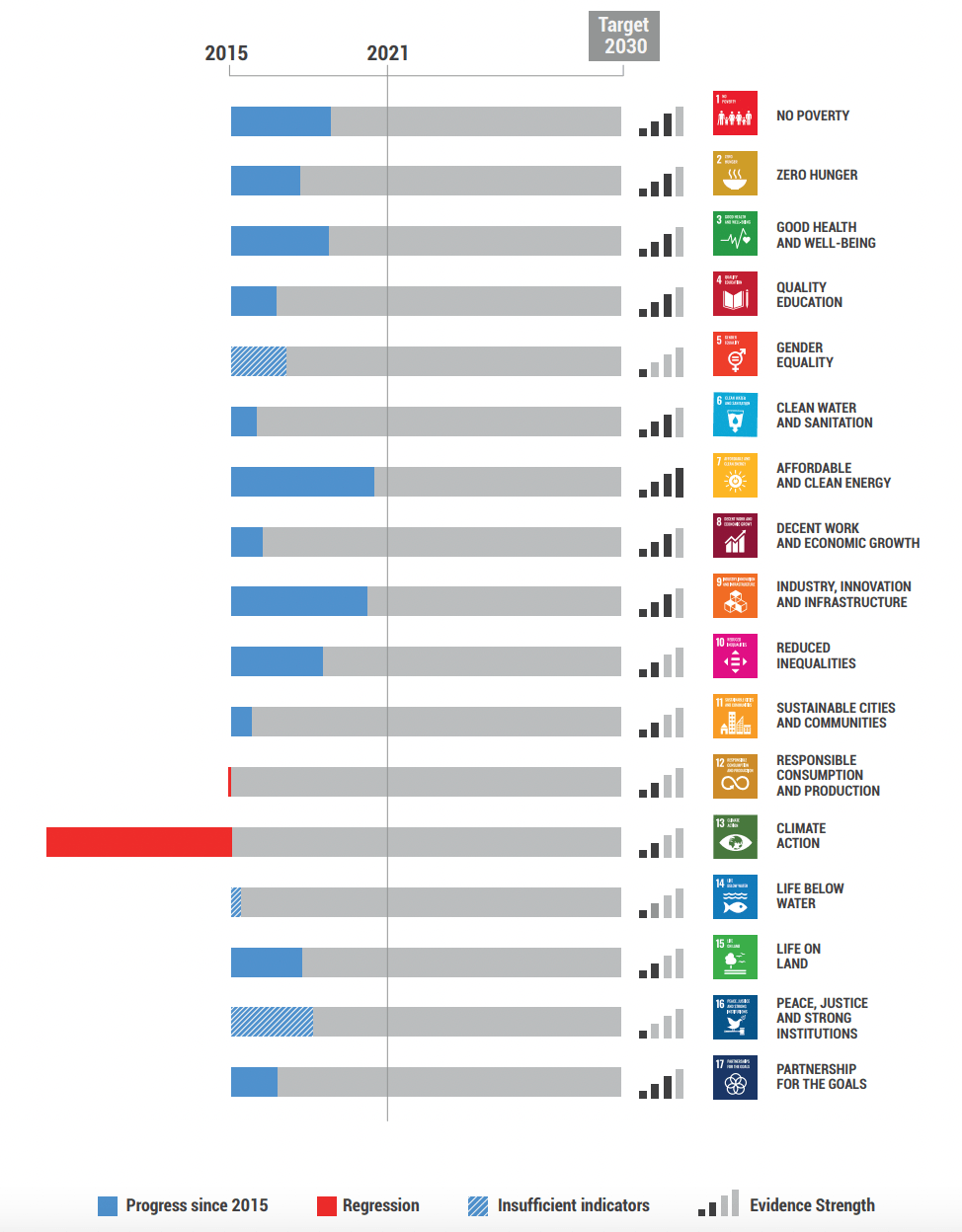It was in 2015 when the United Nations officially launched the 17 global Sustainable Development Goals (SDGs) to provide a shared blueprint for peace and prosperity for the people and the planet. The UN called for the participation of all national governments, saying the worsening cases of poverty, hunger, global warming, and climate change need urgent action. These massive transformative steps were initially hoped to be achieved over the next 15 years. By 2030, the world would be a better place.
But in 2017, the UN said the fulfillment of the SDGs could take more time than expected, setting 2052 as its new target. After two years, in 2019, the estimate was again extended to 2057. And with each passing year, the expected timeline has lengthened. According to a new report released by the UN, in the Asia Pacific alone, the achievement of the 2030 sustainable development goals may take even longer.
The progress report indicating the region’s increasing vulnerability to climate change and economic inequality comes as the world enters another year of the coronavirus pandemic and the ongoing conflict in Europe.
“Amid these challenges, the region is not on track to achieve the 2030 targets of the Sustainable Development Goals,” said Armida Salsiah Alisjahbana, the Undersecretary-General of the United Nations. “In fact, progress in the region has slowed down, and with every passing year, the 2030 targets are further out of reach.”
The vision and ambition of the 2030 Agenda for Sustainable Development are no less critical and relevant than they were in 2015, yet the expected year for the achievement of the SDGs is now 2065, and the gap grows wider with each passing year, reads the UN report.

How much progress has been made?
Countries in the Asia Pacific, which includes Vietnam, are now at more risk of facing the negative economic impact of the crisis, which is sure to compromise and further slowdown environmental and social targets. The region has long been warned by the UN and several other international environmental groups as the most vulnerable to climate change.
“In this time of great change and difficult challenges, there is an urgent need to redouble efforts to fully implement the 2030 Agenda for Sustainable Development, especially for those furthest behind,” added Alisjahbana.
Data show that the region never had any significant progress on climate action (Goal 13) since tracking began in 2016. In fact, indicators continue to regress. Responsible consumption and production (Goal 12) is also showing backward development since 2015.

Alarmingly, every Asia Pacific subregion (East Asia, Oceania, the Russian Far East, South Asia, and Southeast Asia) has regressed on SDG 12 and 13. In addition, the North and Central Asia subregion has regressed on life below water (Goal 14); the Pacific subregion has regressed on clean water and sanitation (Goal 6), reduced inequalities (Goal 10), and sustainable cities and communities (Goal 11); the Southeast Asia subregion has regressed on Goal 6, Goal 11 and Goal 14; and the South and South-West Asia subregion has regressed on Goal 11.
There is, however, some progress in the region on the industry, innovation, and infrastructure (Goal 9). South-East Asia is making strides in building resilient infrastructure and promoting inclusive and sustainable industrialization. Coverage of mobile networks in Brunei Darussalam, Indonesia, Malaysia, Singapore, Thailand, and Vietnam is well over 95%. These technological advancements must remain on course to achieve the target, reads the report.
The whole region also made progress towards no poverty (Goal 1), good health and wellbeing (Goal 3), and reduced inequalities (Goal 10).
But the United Nations said that at the current rate of change, “none of the 17 SDGs will be achieved” in all five subregions.
Widening disparities

The UN identified factors that have contributed to the situation, including continued unsustainable development pathways coupled with an increase in the frequency and intensity of human-made crises and natural disasters. The coronavirus pandemic also greatly impacted any initiative taken towards the achievement of the SDGs. The report also acknowledged that that slowdown could be because the remaining development challenges are harder to overcome.
The report also warned that vulnerable groups in the region face “multidimensional deprivation in access to opportunities,” making progress especially harder to achieve. Access to opportunities varies between racial and ethnic groups and genders, and people of different abilities, migratory statuses, and ages. For many vulnerable populations, food security, education, and livelihoods have deteriorated during the pandemic.
According to the data from the UN, 15-64% of women in the Asia Pacific experience physical and/or sexual violence; 32 million children are affected by wasting (a form of malnutrition), and only 21.6% of persons with severe disabilities obtain disability cash benefits.
Furthermore, some races, castes and ethnic groups in the region may be 10 times more likely to be multidimensionally poor because they are deprived of scope and freedom to work. And as the Asia Pacific hosts 19% of the world’s total refugee population, there has been a worrying increase in reported deaths and disappearances during migration between 2019 and 2021.
Sadly, many forms of exclusion remain — even amidst modernity and social advancement — hindering any kind of real progress. But while the finish line may now be further off than ever before, getting there must remain at the top of every nation’s development agenda.
